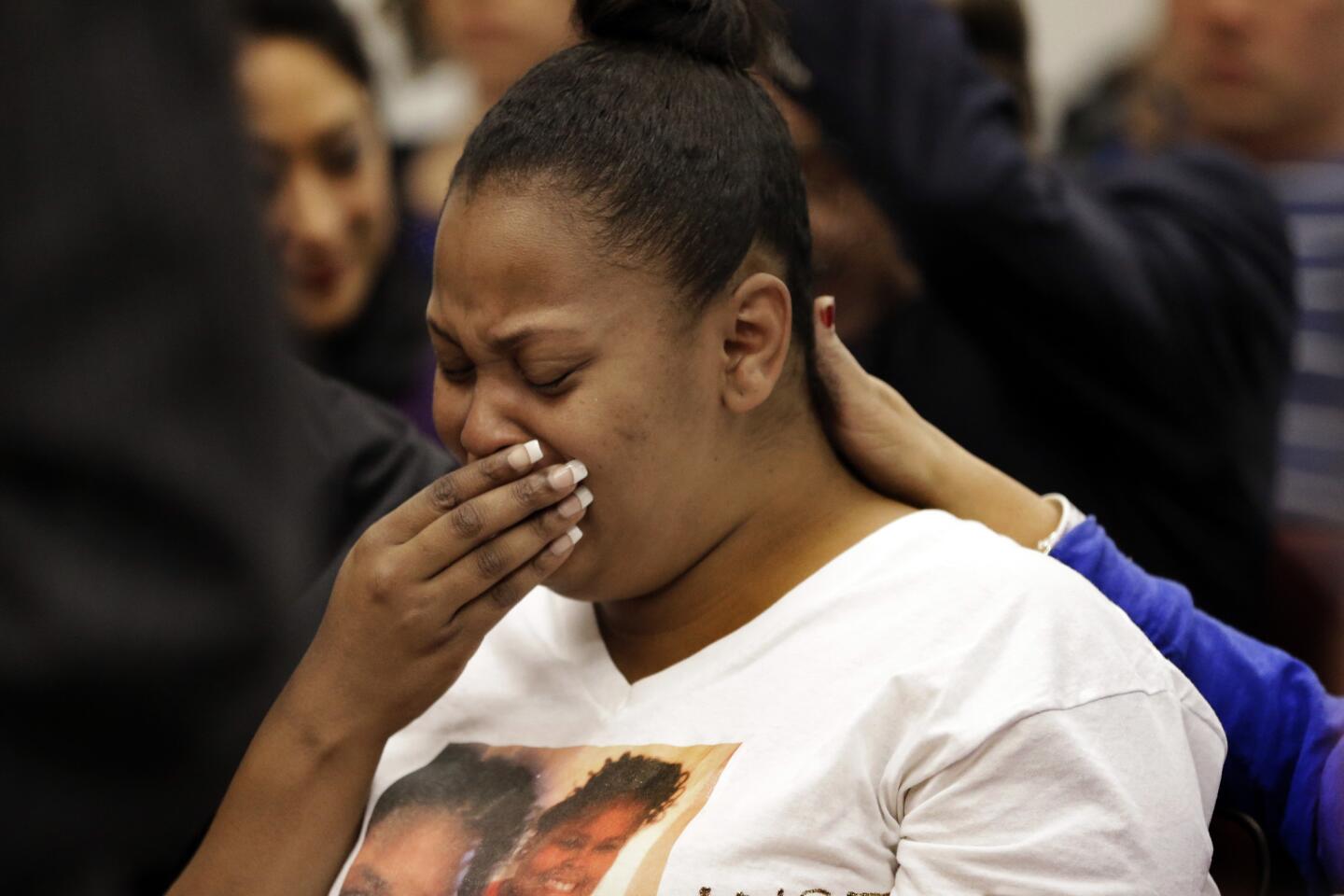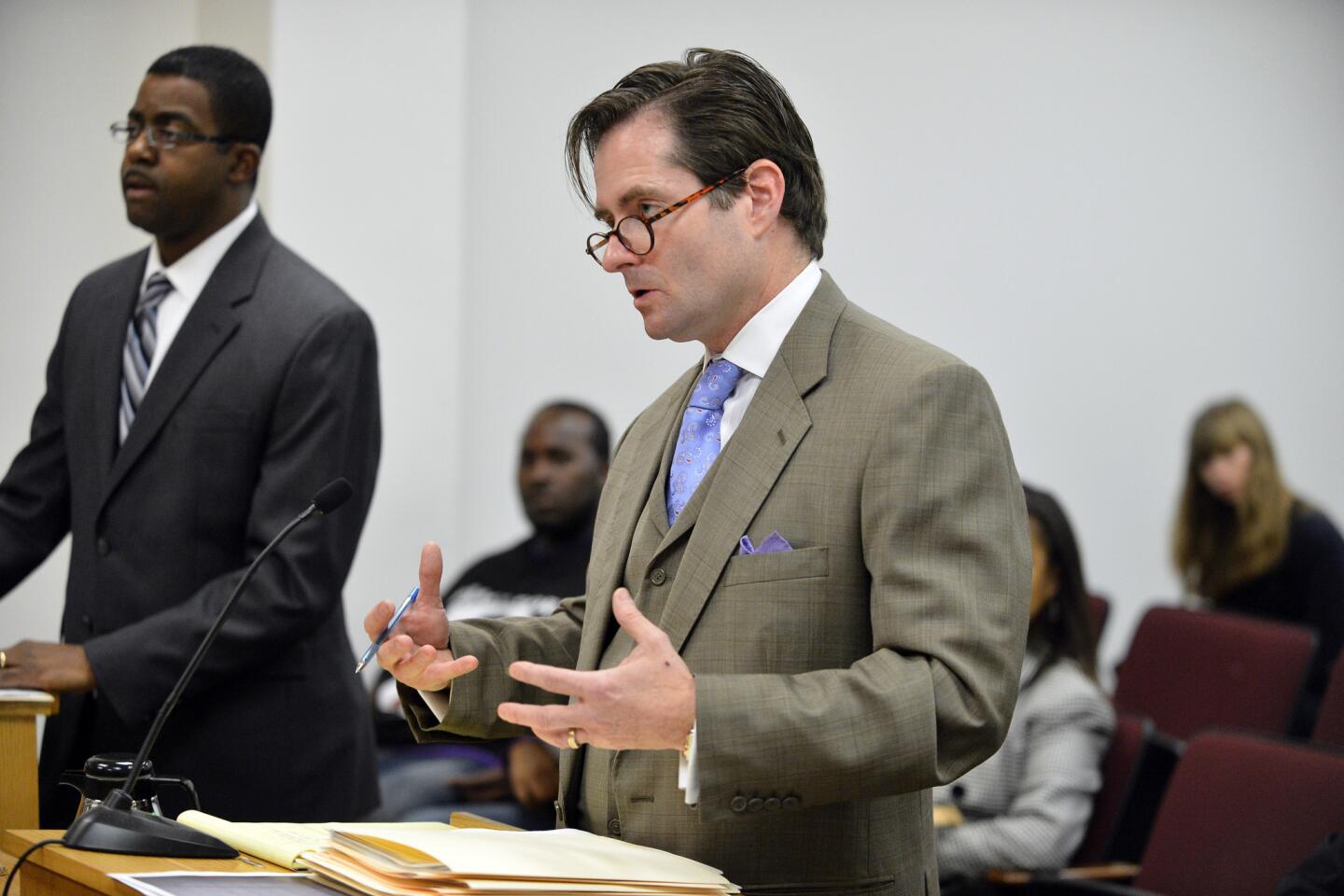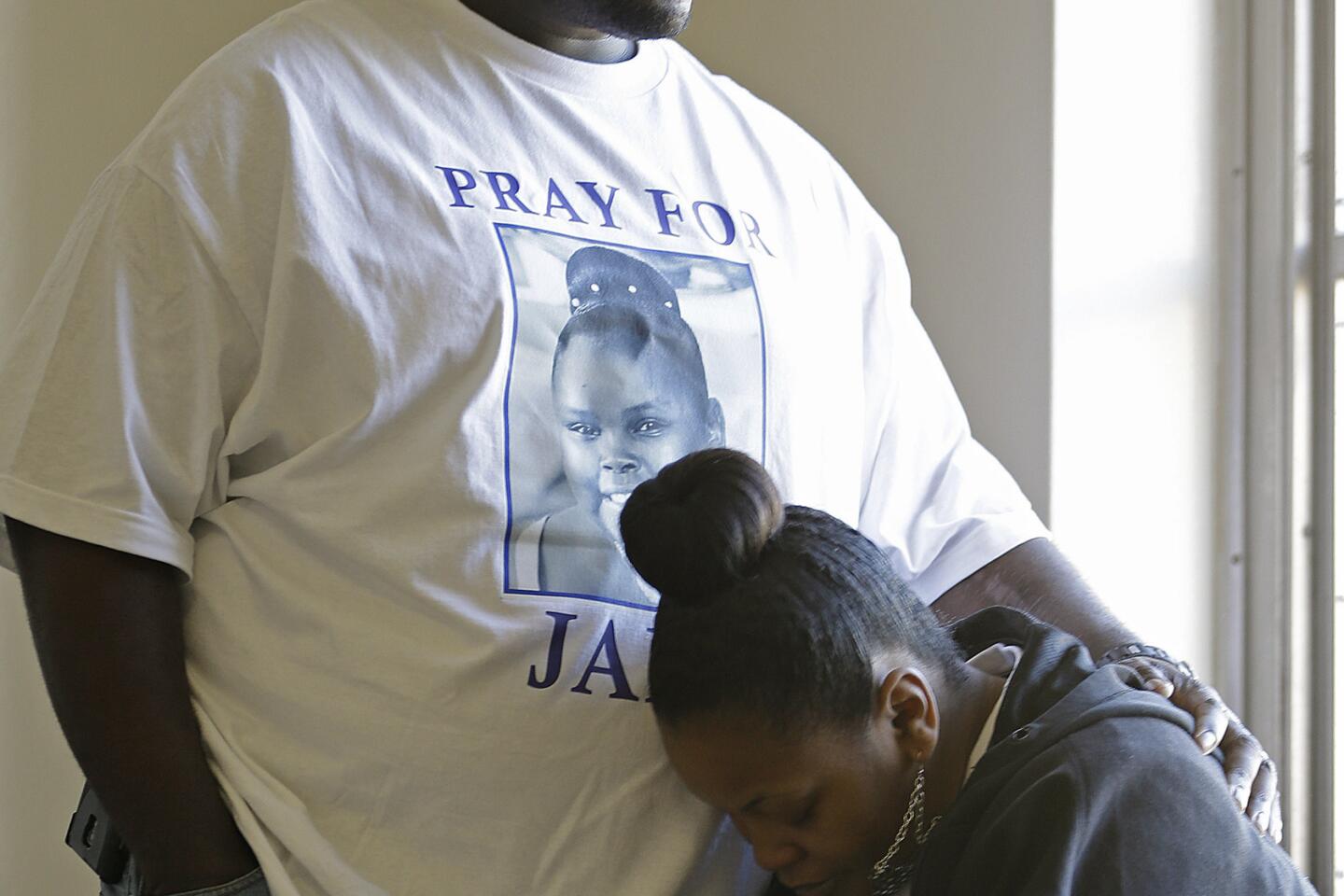Tests show Jahi McMath has brain activity, lawyer says
- Share via
Reporting from San Francisco — An attorney for Jahi McMath said Thursday that new diagnostic tests indicate the girl deemed brain-dead after a tonsillectomy last December is showing evidence of brain activity.
Chris Dolan held a news conference to disclose testing results that he says should support a reversal of a judge’s January finding of brain death — which is legal death — and an amendment to a death certificate issued for the 13-year-old girl.
------------
FOR THE RECORD
An earlier version of this post mispelled the name of Alameda County Superior Court Judge Evelio Grillo. It has been corrected.
------------
Two doctors at UCSF Benioff Children’s Hospital Oakland deemed Jahi brain-dead last December when two evaluations revealed no neurological activity in her brain. She had suffered extensive bleeding and cardiac arrest after surgery.
A third court-ordered evaluation was conducted by Dr. Paul Fisher, chief of Stanford School of Medicine’s division of child neurology, and concluded the same. Alameda County Superior Court Judge Evelio Grillo then ruled that Jahi was brain-dead.
The family was allowed to remove her from the hospital on a ventilator after a death certificate was issued, however, and she has been cared for first in a New Jersey Catholic hospital and for the last month at a New Jersey home, Dolan said. She remains on a ventilator.
Whole-brain death is defined as “the irreversible loss of the capacity for consciousness and the irreversible cessation of integrated functioning of the organism as a whole.”
Experts anticipated that without blood flow to the brain, which the early tests confirmed, Jahi’s body would deteriorate, be unable to regulate temperature and other key functions, and that her brain would probably liquefy.
The tests, conducted at Rutgers New Jersey Medical School, included an MRI and EEG, said Dolan and two experts who participated in the news conference by phone.
They purportedly showed intact brain structure, cerebral blood flow and electrical activity. Dolan said the girl has also begun her menstrual cycle, which experts say is inconsistent with brain death since it demands pituitary function.
Dr. Charles J. Prestigiacomo, chair of the neurological surgery department at Rutgers, said in a phone interview that the case raises questions of whether there “is something we might need to change in our basic teaching” on brain death.
“From what I know and what I’ve experienced with individuals who have been deemed brain-dead, usually the classic teaching is the body can’t tolerate and be functional for that long a period of time without there being important input from some part of the brain,” said Prestigiacomo, one of the experts who joined Dolan for the news conference.
Brain anatomy “has been preserved that we don’t expect to see nine months after what we consider brain death,” he said, and in cases of brain death “we would not see any electrical activity in any part of the brain.”
Also joining Dolan by phone was Philip A. De Fina, the founder, chief executive and chief scientific officer of the New Jersey-based International Brain Research Foundation.
De Fina said his nonprofit organization paid for the evaluations, receiving the Medicare rate, and recruited the other experts, among them Dr. Calixto Machado, a neurological researcher in Cuba and member of the American Academy of Neurology who has written extensively on brain death and adheres to the definition accepted by the medical establishment.
Dolan has asked Grillo’s court to overturn the brain death determination, but the judge has raised questions about whether he has the jurisdiction, since 60 days had passed with no appeal. He scheduled a hearing for Oct. 9.
The girl’s family has been living in New Jersey but wants to return to Calfornia, where with a death declaration she would likely not be accepted for care at any hospital, nor would costs of care be covered.
Arthur Caplan, director of the division of medical ethics at New York University Langone Medical Center, cautioned that the verdict is still out, saying some neurons can still fire in brain death, and that the youth of Jahi when declared brain-dead could mean her body is withstanding beyond what is normally expected.
“Brain death is loss of integrated functioning, not loss of every neuron firing,” he said.
The matter is not likely to be settled by an Alameda County court, he added, but by renewed conversations in the medical field.
“I think you have to be very careful,” he added, “because just as with any big public policy issue, trust around being certain that your loved one has died, if you try to undermine that, you’re going to cause a tremendous amount of uncertainty, grief, worry on the part of millions and millions of people.”
Rebecca Dresser, professor of law and ethics in medicine at Washington University School of Law in St. Louis, said the new test data would have to be fully vetted.
But if they bear out, it could mean the initial determinations were made in error, she said, “or it shows that medical authorities don’t know everything about brain death, that there may be cases that seem to fit the medical criteria where people are actually not brain-dead.”
Twitter: @leeromney
More to Read
Sign up for Essential California
The most important California stories and recommendations in your inbox every morning.
You may occasionally receive promotional content from the Los Angeles Times.


















